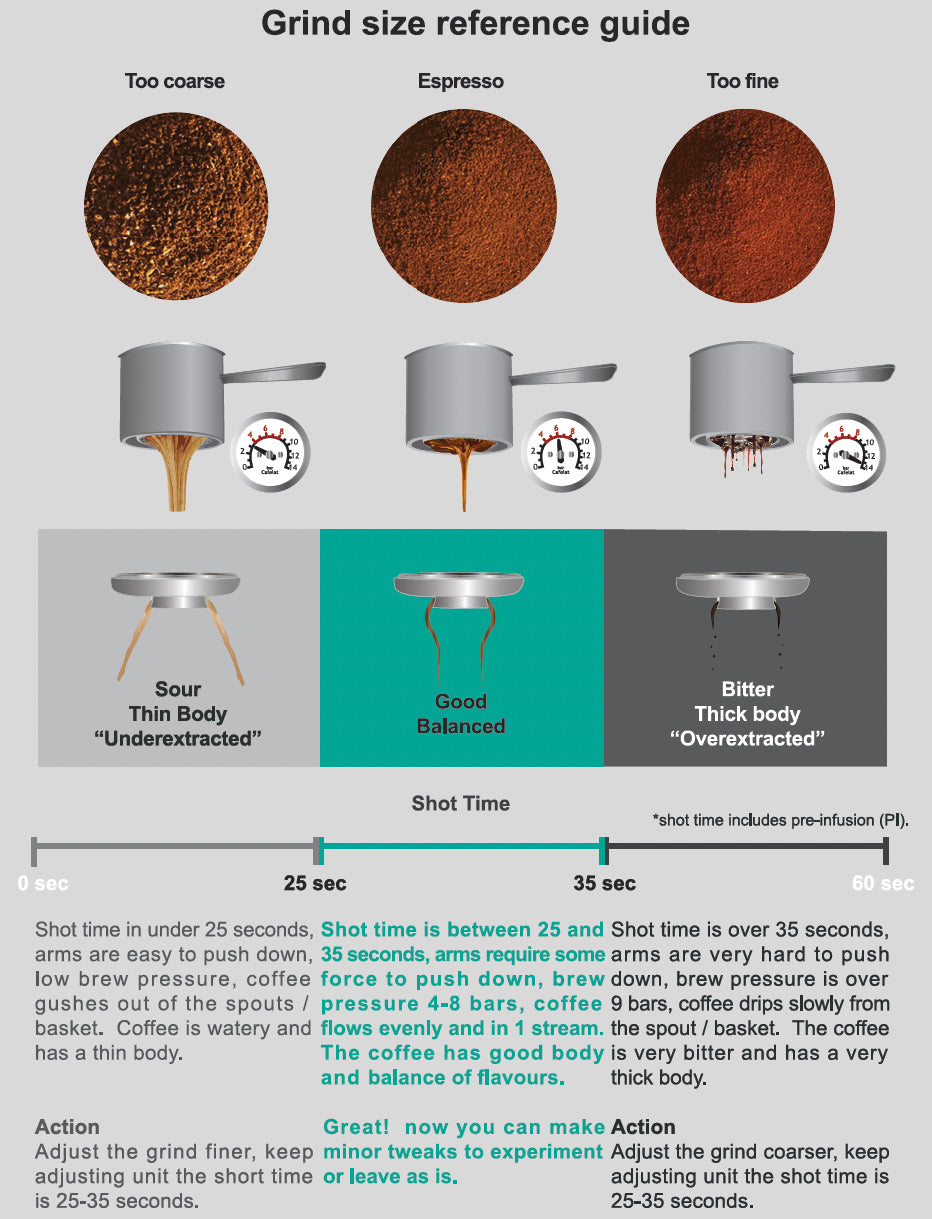How to Time Espresso Extraction
As a home barista, perfecting your espresso extraction timing can significantly enhance your coffee experience. The beauty of espresso lies in achieving the right balance between timing, grind size, and extraction flow. When I first started making espresso, I found this process overwhelming, but once I grasped the details, it became a highly enjoyable and rewarding part of my coffee routine. Dive into the features and performance in our DeLonghi Magnifica Evo review
Why Timing Your Espresso Extraction Is Crucial
Timing plays a pivotal role in achieving a consistent and delicious espresso. It allows you to control the amount of flavor that’s drawn out from the coffee grounds. An extraction that’s too short results in an under-extracted shot, leaving you with a sour, sharp espresso that lacks depth. On the flip side, an overly long extraction can cause bitterness and an unpleasant aftertaste, a telltale sign of over-extraction. Learn why this classic model stands out in our DeLonghi Magnifica S review

Different Approaches to Timing Espresso Extraction
In my experience, there are two main methods to time espresso extraction. You can either start the timer when the pump starts, or you can wait until the first drip of espresso appears. Personally, I prefer to begin timing as soon as I press the espresso button, which includes the pre-infusion time and ensures greater consistency across different shots. Discover the convenience and technology in our Philips LatteGo 5400 review
The Optimal Extraction Time Window
The general guideline for espresso extraction is between 25 and 35 seconds. From my own trials, aiming for around 30 seconds tends to provide a well-balanced shot. If your extraction finishes in less than 25 seconds, it is likely under-extracted, resulting in a weak and sour flavor. On the other hand, if it exceeds 35 seconds, it’s probably over-extracted and may taste too bitter. Explore the compact design and features in our Philips 3200 LatteGo review
Adjusting Grind Size to Perfect Your Timing
The timing of your espresso extraction is closely tied to grind size. A finer grind will slow the extraction, while a coarser grind will speed it up. If your shot is pulling too fast (under 25 seconds), your grind may be too coarse. Conversely, if the extraction takes longer than 35 seconds, you may need to adjust to a coarser grind. Finding the right grind size took me several attempts, but once I dialed it in, it made a world of difference in my espresso quality. Get all the details on versatility and functionality in our Philips 4300 LatteGo review
Taste Testing: The Final Judge of Your Espresso
While timing is important, taste should always be your ultimate guide. I’ve learned that no matter how precise your timing is, the flavor profile is what truly matters. A well-balanced espresso should offer a harmonious mix of sweetness, acidity, and body. If your shot tastes sour or thin, it may be under-extracted, meaning you should consider grinding finer or adjusting the brew ratio. On the other hand, if it tastes bitter and dry, it’s likely over-extracted, and a coarser grind or shorter extraction time may help.
Common Espresso Extraction Issues and How to Fix Them
Here are some common extraction problems I’ve encountered, along with their solutions:
Under-extraction: If the shot pulls in less than 25 seconds and tastes sour or flat, the grind is likely too coarse. The solution is to grind the coffee finer and try again.
Over-extraction: If the shot takes longer than 35 seconds and has a bitter, dry aftertaste, the grind is probably too fine. Adjusting to a coarser grind typically solves the issue.
The Influence of Pre-Infusion on Timing
Pre-infusion can also affect the total extraction time. Some espresso machines, particularly higher-end models, have a pre-infusion feature where water sits on the grounds before full pressure is applied. Including this time in your overall extraction timing can lead to better results. If your machine doesn’t have automatic pre-infusion, you can simulate it by manually starting and stopping the pump briefly.
Experimenting with Brew Ratios to Enhance Flavor
Another key factor that affects espresso extraction is the brew ratio, which refers to the amount of ground coffee used in comparison to the amount of liquid espresso produced. A typical starting ratio is 1:2, such as 18 grams of coffee producing 36 grams of espresso. However, I’ve found that tweaking this ratio depending on the type of beans can reveal unique flavors.
For lighter roasts, a lower brew ratio or longer extraction (e.g., 1:2.5) can enhance the brighter, fruity notes. For darker roasts, staying closer to a 1:2 ratio can help reduce bitterness while maintaining richness and body.

The Importance of Tasting and Sensory Feedback
At the end of the day, tasting and evaluating your espresso is the most important step. While timing offers a solid framework, taste ultimately determines the success of your shot. I’ve had shots that were perfectly timed at 30 seconds but didn’t taste right due to grind size or brew ratio issues. By experimenting with timing, grind, and ratios, I’ve honed my ability to pull consistently great shots.
Mastering the art of espresso extraction takes time, practice, and patience. By focusing on key factors like timing, adjusting grind size, and tasting your results, you’ll be pulling perfect espresso shots before you know it.
